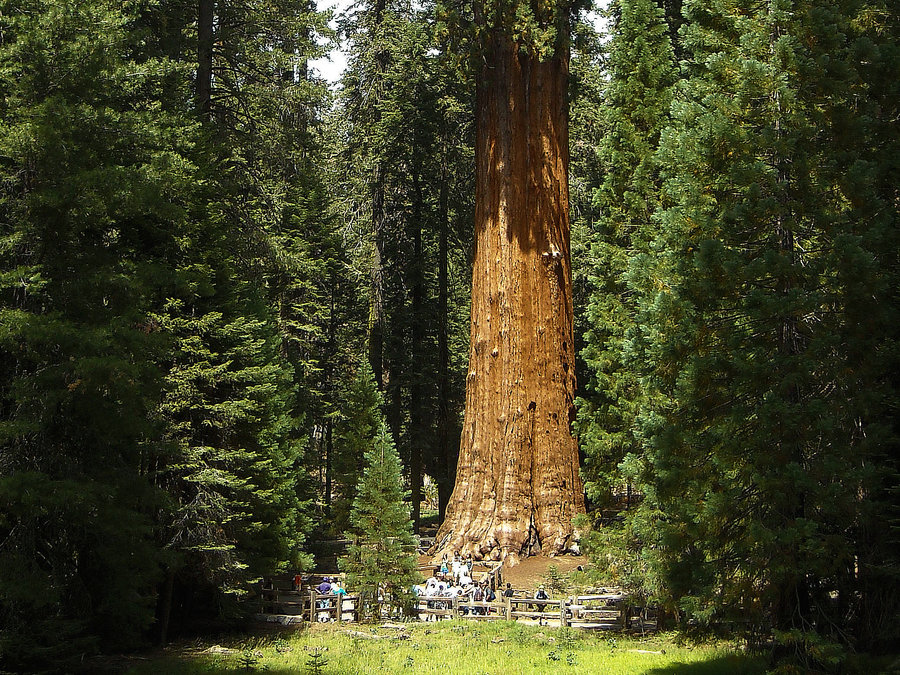What are we talking about? Read a little more and be surprised.
The General Assembly of the United Nations declared 2011 as the International Year of Forests, thus raising awareness in the international community of the need for sustainable management, conservation and sustainable development of all types of forests, under the motto “Forests for all ”. A motto that challenges all people to know the Forest, valuing all the resources that come from it and encompassing all the trees contained in it.
Starting with the challenge of the most fundamental knowledge of its morphology, we ask: do you know the tallest, thickest, largest and oldest TREES in the world?
Some tree species have very high crowns, shading the forests, while others have old, gnarled branches that offer little shelter in arid landscapes.
Many of these trees fell prey to intensive logging and human encroachment. Some, however, persist. Let's get to know the “more”, within the parameters of height, diameter, volume and age.
the tallest. The tallest trees on the planet are the evergreen redwoods (sequoia sempervirens) from the North American Pacific coast. The tallest one, named Hyperion (these names embody the trees and thus help foster support for their continued protection) was discovered in 2006 in California's Sequoias Natural Park. At 115,6 meters tall, it is one of the astonishing 180 known sequoias measuring over 107 meters.
Tasmanian eucalyptus, the tallest flowering plant in the world, is endemic to two Australian states, Victoria and Tasmania. In 2008, a specimen of eucalyptus “the Centurion” of the species was discovered (eucalyptus regnans), which reached a new record, with 99,6 meters high. Centurion is not only the tallest eucalyptus in the world, but also the tallest angiosperm in the world.
The thickest ones. Requiring water, the Montezuma taxode can never reach great heights like the competitors, but this species can reach great dimensions in diameter or circumference.
The Tule tree or Montezuma cypress or ahuehuete (the old man of water), as it is known, is the thickest single trunk tree in the world and is located in Santa Maria del Tule, in the Mexican state of Oxaca. This is a taxode copy (taxodium mucronatum) with 11,62 meters in diameter, which corresponds to 36,2 meters in circumference (measurement from 2005). It is estimated to be between 1200 and 3000 years old.
The biggest in volume, the most majestic. The “General Sherman” giant sequoia is the largest single-trunk tree in terms of total wood volume. In Sequoias National Park, an 83,8 meter tall monster has held the record for size for almost 8 decades – it currently has 1487 cubic meters on the main trunk alone.
Giant sequoias have a thick, rough bark (may be three feet thick at the base of the trunk) that helps protect them from wildfires; cones opened by the heat of a fire can scatter millions of seeds in an area equivalent to half a football field.
The oldest ones. The oldest trees are the pine trees of the species Pinus longaeva. A specimen from California, named Methuselah, is considered the oldest known uncloned organism, having survived 4800 years.
The superficial roots of these conifers allow them to absorb water, while the needles help to retain moisture. In extreme environments, this pine tree measures no more than 9 meters, but the robust trunk continues to gain weight.
Often, narrow strips of stem support the foliage on mostly dead trunks. Coniferous species are the oldest. This is the case of California pine trees Pinus longaeva and redwoods.
However, one of the oldest trees (if we consider the clones, as they result from the vegetative propagation of the original foot) is located on the Australian island of Tasmania, in the Monte Real forest reserve, situated at an altitude of about 1000 meters. This living fossil, franklinni lizards, is a conifer with an estimated age of 10 years.
This specimen was able to extend its branches for two geological eras. When his seed germinated, Man was still painting the engravings of Foz Coa.
Another much older specimen, also a clone, but from Populus tremuloides, is referenced in Utah, USA, with age estimates between 80 thousand years and 1 million years.
Note: Text written by Ivone Fachada under the Science@Bragança project and now available for the “Culture, Science and Technology” project of the Portuguese Press Association
Author: Ivone Fachada is the executive director of the Centro Ciência Viva de Bragança.
Postgraduate in History of Science and Science Education at the University of Aveiro and University of Coimbra (attendance of an interdisciplinary doctorate).
Master in Nature Management and Conservation from the University of Azores.
Degree in Forestry Engineering from the Polytechnic Institute of Bragança.
member of ScicomPT – National Science Communicators Network, being part of the Board of this Association between October 2017 and May 2020.
Teacher trainer, accredited by the Scientific and Pedagogical Council for Continuing Education in the domains: “A64- Environmental Sciences” and “D08 – Environmental Education”.
Author or co-author of more than thirty articles in journals, conferences and book chapters.





















Comments